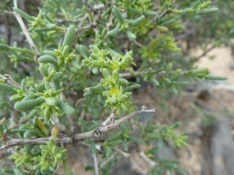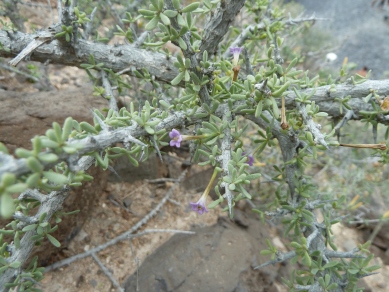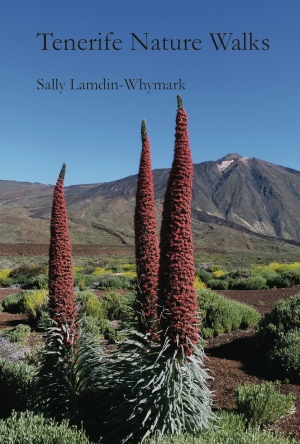Blog Archives
Coastal walk looking at some great endemic plants in flower

Neochamaelea pulverulenta, known locally as Leña buena (literally ‘good firewood’), a Canary endemic of dry coastal areas
I did this walk with an Irish walking group last Tuesday, 26th November. We had intended to do a walk elsewhere on the island, in the hills, but the weather was not promising, so we chose to walk on the coast. I was happy with this as there are plenty of flowers there at this time of year when there is not a great variety elsewhere.

Gymnocarpus decandros (synonomous Gymnocarpus salsaloides ) is an unassuming little shrub about 50-60cm high (c 2ft), with stunning little greenish-yellow flowers at this time of year.
We set out from the little village of El Puertito, off the coastal road near Armeñime on the west coast of Tenerife. The village is on an inlet, with a small, safe, sandy beach between two rocky promontories. The walk starts from near the bar at the southern end of the beach. The path goes between the houses and the sea and then wanders up through other houses until it comes into the open beyond them. The path wanders past abandoned fields, up and down, and in and out, but always within sight of the sea, as it makes its way towards La Caleta, the next village to the south.
The landscape of the shore in this area is very picturesque with lots of inlets, and very varied geology. The rocks are almost all of volcanic origin, but are so different in appearance and colour. The main contrast being between dark grey/black lava flows overlain by a great depth of whitish pumice erupted in an explosive manner. The black rock is more resistant to the sea’s erosion and forms the basis of the rocky promontories, but the pumice erodes down to form sandy beaches in some of the inlets. There are also well cemented conglomerates with rocky breccia some of which have a terracotta red colour.

Astydamia latifolia, known locally as Lechuga del mar or ‘Sea lettuce’. These are not yet in flower, but will be soon, with showy yellow umbels
These varied rock types makes for a variety of habitats within a small area, and as the path approaches La Caleta the diversity of plants increases. Because of this most of the walk, only excepting the bit nearest El Puertito, is in a protected area called ‘Sitio de Interés Cientifico de La Caleta’ (Site of Special Scientific Interest (SSSI) La Caleta).
A selection of photos of some of the plants present is shown on this page. I hope you enjoy them, and as a result will look more closely at these remarkable plants if you are walking on the coast in the Canary Islands.

A view over the bay nearest to La Caleta, showing the contrasting black lava rock and the white pumice deposits
The walk is relatively gentle, although there are short stretches where the path is a bit rough underfoot, so good footwear is desirable.

A view of the plants typical of this coastal area, with the Canary Spurge (Euphorbia canariensis) or Cardón, in the foreground and a view to the mountains near Ifonche in the background

Asparagus arborescens, Tree asparagus, a Canary endemic which is a woody shrub in coastal areas like La Caleta
The length of the walk, both there and back, was just 5.8 km / 3.63 miles and took us less than 3 hours, including a break for lunch.


